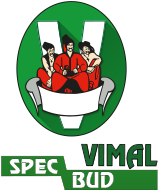Welding is a technological process of joining metals by establishing interatomic bonds between them. It can be used to join alloys, as well as homogeneous and heterogeneous materials. Nowadays, welding is widely used in almost all fields of construction and mechanical engineering.
The tremendous advantages of welding have ensured its broad application in the national economy. It is used to manufacture ships, airplanes, bridges, reactors, turbines, boilers, and other structures. Welding is always characterized by quality and high reliability.
Traditionally, welding services are divided into two main directions: household plumbing welding and industrial metal welding. Modern innovative advances allow such types of installation to be performed in any circumstances and adverse conditions. At the same time, the price for universal welding services is higher because universal welders work effectively with materials from both directions (metal and plumbing). This allows for quick pipe installation without unnecessary costs and stress.
We provide a full range of welding services for various metals: ferrous metals, cast iron, aluminum, stainless steel, bronze, copper, and others.
BC "VIMALSPETSBUD" offers repair and restoration of machine and automotive parts, including welding and subsequent mechanical processing.
Manual arc welding (MMA)
Principle of operation: During welding with an electrode, contact between the core electrode and the workpiece ignites the welding arc. This creates a brief short circuit between two poles, allowing current to flow. The arc burns between the workpiece and the electrode, generating the amount of heat needed for melting. The electrode’s core and its melting coating also supply protective slag and gas shielding.
Manual arc welding requires low voltage and high current. The welding system converts the available mains voltage to a significantly lower welding voltage, while providing a current adjustable to set and regulate the power source.
During manual arc welding with a coated electrode, the current strength is the most important parameter affecting the joint quality. Therefore, the current level should remain as constant as possible, even if the arc length changes. To ensure this, power supplies for manual arc welding with coated electrodes always have drooping characteristics.
Structure of the electrode welding system:
- connection to the power supply;
- power source;
- welding cable (electrode);
- grounding cable (workpiece);
- electrode holder;
- grounding clamp;
- core electrode;
- workpiece.
Semi-automatic arc welding in protective gas environment (MIG / MAG)
MIG/MAG welding is also called gas-shielded arc welding. There is a difference between welding with a metal electrode in inert gases (MIG) and in active gases (MAG). Currently, MIG/MAG is the most widespread welding process, enabling extremely high welding speed. It can be used manually, mechanized, or automated.
Principle of operation: During MIG/MAG welding, the filler material or welding wire ignites the welding arc when touching the workpiece. The consumable wire is used as the filler.
To protect the welding arc from reactive oxygen in the environment, a "shielding gas" is also supplied through the gas nozzle. This reduces oxygen intake during welding and thus prevents oxidation on the welding arc and in the weld pool.
MAG welding uses active gases such as pure CO₂ or gas mixtures (argon, CO₂, O₂) in various compositions. These gases are very reactive. MAG welding is used for unalloyed, low-alloy, and high-alloy materials.
MIG welding uses inert, i.e., non-reactive gases such as pure argon and helium or mixtures of argon and helium. This process is suitable for welding materials like aluminum, copper, magnesium, and titanium.
Structure of the MIG / MAG welding system:
- connection to the power supply;
- power source;
- hose package;
- grounding cable;
- welding torch;
- grounding clamp;
- workpiece;
- filler material;
- shielding gas.
Argon arc welding in inert gas environment (TIG)
TIG welding is a gas-shielded welding process belonging to fusion welding methods. It is used where optimal quality and splash-free welds are required. TIG welding is suitable especially for stainless steel, aluminum, and nickel alloys, as well as for thin sheet metal made of aluminum and stainless steel. It is used in pipeline construction, container manufacturing, portal structure construction, and aerospace industry.
Principle of operation: During TIG welding, current is supplied through a tungsten electrode, which is temperature resistant and does not melt. This electrode emits an arc that heats and melts the material. The electrode is surrounded by a nozzle supplying shielding gas. This protects the heated material from chemical reactions with the surrounding air. Inert gases such as argon, helium, or their mixtures are used. Inert gases prevent chemical reactions in the weld pool and heated material, ensuring high weld quality.
The tungsten electrode is the core of TIG welding. Tungsten has the highest melting point among all pure metals in the periodic table (3380 °C). This means the electrode does not melt while emitting the arc that heats and melts the material.
Materials suitable for TIG welding?
The most popular TIG welding materials are stainless steels, aluminum and nickel alloys, and thin aluminum and stainless steel sheets. Using a wire feed mechanism allows for economical and fast welding of sheets thinner than 4 mm. For thicker sheets, the efficiency decreases, and TIG welding is recommended only for root pass welding. More powerful processes like MIG/MAG or submerged arc welding are suitable for filling passes.
We are located in Chernihiv and perform welding works of varying complexity. You can order welding services from BC "VIMALSPETSBUD" by submitting an online application or contacting us by phone. (Go to contacts)
